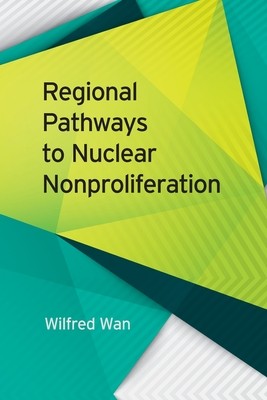
- We will send in 10–14 business days.
- Author: Wilfred Wan
- Publisher: University of Georgia Press
- ISBN-10: 0820364924
- ISBN-13: 9780820364926
- Format: 15.2 x 22.9 x 1.2 cm, softcover
- Language: English
- SAVE -10% with code: EXTRA
Reviews
Description
The contemporary nuclear landscape is rife with challenges. Stagnated progress in disarmament, widespread modernization plans, and emergent proliferation pathways are contributing to the risk of catastrophe. Meanwhile, global nuclear order appears more precarious than ever.
This book makes a case for a regional reorientation of the nuclear nonproliferation regime, arguing that a more specialized, decentralized, and localized arrangement could more effectively address post-Cold War challenges. In the process, it develops a framework to analyze the conditions that would allow for more robust regional nuclear cooperation. Regional Pathways to Nuclear Nonproliferation includes a series of case studies, centering on Northeast Asia, Southeast Asia, and the Middle East. It provides a comprehensive overview of existing nuclear cooperation at the regional level, including in the context of nuclear-weapon-free zones. For each case, the book both analyzes the viability of a stronger regional nuclear order and considers the form such an order would likely take. What is the magnitude and character of the nuclear proliferation threat across different regions? What does the presence of institutions in economic, environmental, and human security domains suggest about the likelihood of addressing that threat? A better understanding of broader regional patterns may be the key to explaining the possibility of regional nuclear cooperation. It may also help identify means to effectuate the timing and scale of that cooperation, bolstering regional nuclear orders and, in turn, ensuring the viability of global nuclear order.EXTRA 10 % discount with code: EXTRA
The promotion ends in 21d.01:12:43
The discount code is valid when purchasing from 10 €. Discounts do not stack.
- Author: Wilfred Wan
- Publisher: University of Georgia Press
- ISBN-10: 0820364924
- ISBN-13: 9780820364926
- Format: 15.2 x 22.9 x 1.2 cm, softcover
- Language: English English
The contemporary nuclear landscape is rife with challenges. Stagnated progress in disarmament, widespread modernization plans, and emergent proliferation pathways are contributing to the risk of catastrophe. Meanwhile, global nuclear order appears more precarious than ever.
This book makes a case for a regional reorientation of the nuclear nonproliferation regime, arguing that a more specialized, decentralized, and localized arrangement could more effectively address post-Cold War challenges. In the process, it develops a framework to analyze the conditions that would allow for more robust regional nuclear cooperation. Regional Pathways to Nuclear Nonproliferation includes a series of case studies, centering on Northeast Asia, Southeast Asia, and the Middle East. It provides a comprehensive overview of existing nuclear cooperation at the regional level, including in the context of nuclear-weapon-free zones. For each case, the book both analyzes the viability of a stronger regional nuclear order and considers the form such an order would likely take. What is the magnitude and character of the nuclear proliferation threat across different regions? What does the presence of institutions in economic, environmental, and human security domains suggest about the likelihood of addressing that threat? A better understanding of broader regional patterns may be the key to explaining the possibility of regional nuclear cooperation. It may also help identify means to effectuate the timing and scale of that cooperation, bolstering regional nuclear orders and, in turn, ensuring the viability of global nuclear order.

Reviews